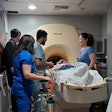
Navigating a radiology department through the many federal regulatory hurdles it faces takes a particular kind of persistence, according to an August 1 presentation at the 2021 AHRA meeting in Nashville, TN.
 Sheila Sferrella, president of Regents Health Resources.
Sheila Sferrella, president of Regents Health Resources.The challenges are legion, constant, and have been exacerbated by the COVID-19 pandemic, said presenters Sheila Sferrella, president of Regents Health Resources in Brentwood, TN, and Melody Mulaik, president of Revenue Cycle Coding Strategies in Cedar Park, TX.
"Healthcare challenges -- from Medicare's Appropriate Use Criteria to surprise billing legislation to COVID-19's impact on imaging volumes -- continue to impact imaging administrators," Sferrella and Mulaik said.
In their talk, Sferrella and Mulaik described some of the regulatory issues radiology administrators face, particularly the No Surprises Act and the U.S. Centers for Medicare and Medicaid Services' (CMS) Appropriate Use Criteria (AUC) program, and offered ideas on how to manage them.
Surprise!
The No Surprises Act is an attempt to mitigate the effect of patients receiving unexpected medical bills from surgical, emergency, outpatient, and inpatient care as the result of some parts of the care being provided by out-of-network caregivers. Physicians send more of these bills than hospitals do, Sferrella and Mulaik said.
Language for the law was included in the Consolidated Appropriations Act of 2021. Right now, it covers out-of-network treatment at hospitals (both inpatient and outpatient services), ambulatory surgery centers, critical access hospitals, and freestanding emergency care facilities. It establishes an arbitration process to address payment disputes between a patient's insurer and the out-of-network provider. It also does the following:
- Prevents health insurers from denying claims from an emergency department for services that represent standard of care.
- Limits what patients pay in an out-of-network care scenario to their in-network cost-sharing amount (deductibles and out-of-pocket maximums).
- Covers patients with health insurance that has no surprise billing protection.
- Prevents radiologists -- and other specialists -- from billing for the difference between the total cost of services being charged and the amount the insurance pays.
How should radiology practices handle the No Surprises Act? Sferrella and Mulaik recommended that administrators work with their finance departments to develop a process for out-of-network pricing; establish a scheduling process for patients who may incur out-of-network charges for service; and determine appropriate out-of-network rates for services.
"It's also important to be clear about which payers of the radiology group may be out-of-network," Sferrella said.
Applying AUC
CMS' AUC structure was introduced in the Protecting Access to Medicare Act of 2014 and applies to advanced imaging studies such as CT, MR, and nuclear medicine (including PET). Physicians ordering these studies must access AUC through a clinical decision-support platform; the decision support mechanism gives immediate feedback about whether the study is appropriate or, if not, which study would be more so.
 Melody Mulaik, president of Revenue Cycle Coding Strategies.
Melody Mulaik, president of Revenue Cycle Coding Strategies."Appropriate Use Criteria must be consulted, and radiologists are not exempt," Sferrella said. "Eventually CMS will identify outliers and will require prior authorization for any advanced imaging studies ordered by outlier physicians for a period of time."
Originally, CMS intended to implement the AUC program in January of 2017, but this was initially delayed to January 2020. The program is now in a three-year testing period with a mandatory implementation date of January 2023.
"Currently, Medicare will pay for a study regardless of whether AUC recommends it," Sferrella said. "But beginning January 1, 2023, it will deny payment if the furnishing imaging provider or radiologist's claim lacks required AUC information."
What are the operational issues involved in implementing AUC? Facilities need to know how to add modifiers and G-codes to bills, and radiologists need to know how to get the AUC information from the hospital, Sferrella said. She and Mulaik recommended that administrators also keep in mind that the imaging service provider may not consult AUC on behalf or in place of the ordering provider and that CMS continues to try to address obstacles that remain in the AUC claims processing protocol.
"Consider how you will implement decision support, how your radiologists will obtain AUC data elements -- that is, G-codes, modifiers, national provider identifiers -- and who will lead AUC implementation in your department," Sferrella said.




















